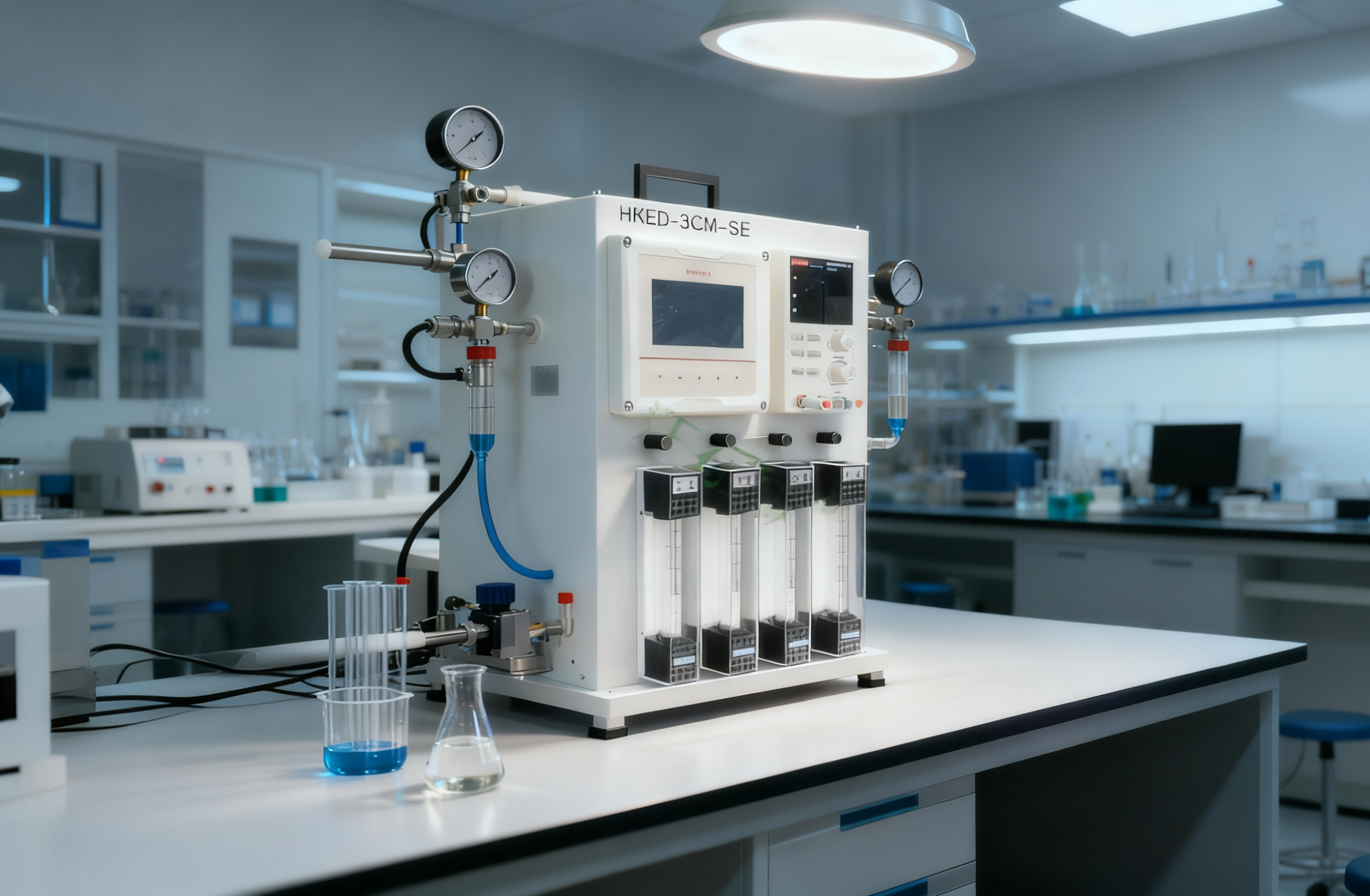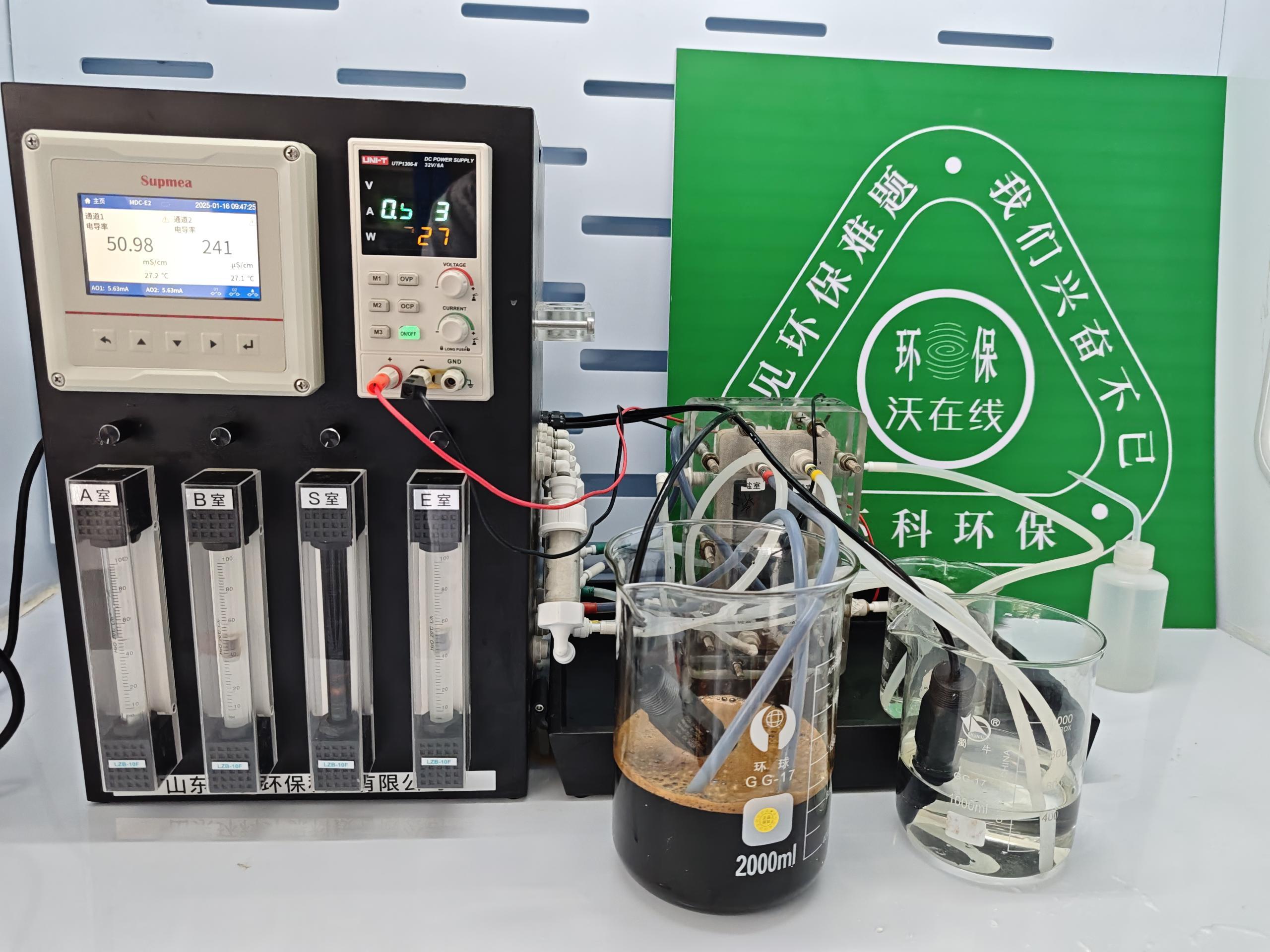17
2025
-
10
The Application of Bipolar Membrane Electrodialysis in the Resource Utilization of Lysine Hydrochloride
Author:
Lysine hydrochloride is widely used in the fields of nutritional supplementation, medicine and food. However, the salt-containing wastewater produced from it contains a high concentration of chloride ions. The traditional neutralization and desalination process has high energy consumption, large reagent consumption and generates a lot of solid waste. Bipolar membrane electrodialysis (BMED) relies on the ion hydrolysis dissociation mechanism to achieve efficient conversion of salts into acids and bases, providing an innovative solution for its clean production and resource utilization.
Technical principles and core advantages
The dissociation mechanism of bipolar membranes: Bipolar membranes are composed of N-type, catalytic layer and P-type membranes. In an electric field, water molecules dissociate into H⁺ and OH⁻. H⁺ moves towards the cathode and reacts with chloride ions to form hydrochloric acid, while OH⁻ moves towards the anode and reacts with lysine cations to generate free lysine. No chemical reagents are needed, reducing alkali consumption and hazardous waste.
Resource utilization and environmental benefits: The lysine solution in the alkali chamber has a purity of ≥90% after concentration and can be reused in production to reduce costs. Hydrochloric acid in the acid chamber can be used as a chemical intermediate to achieve closed-loop utilization of chlorine elements. The salt concentration of the effluent from the salt chamber is ≤5%, meeting the reuse standard and promoting the resource utilization of wastewater.


Key points of technical implementation
Influent water quality control: It is necessary to conduct pretreatment through ultrafiltration and nanofiltration to control SS, Ca²⁺/Mg²⁺, and COD at ≤1mg/L, ≤1mg/L, and ≤50mg/L respectively. The temperature should be maintained at 5-35℃ to prevent membrane fouling and scaling.
Process parameter optimization: A constant current density of 10-50mA/cm² is adopted, with an influent salt concentration of ≥15% and an effluent salt concentration of ≥5%. The single-stage desalination rate of the three-stage membrane stack in series exceeds 90%, ensuring the system is highly efficient and low-consumption.
Membrane material selection: Homogeneous membranes are suitable for the preparation of high-purity lysine. Anti-pollution membranes (such as graphene-coated membranes) can reduce protein adsorption by 60%. The cost of domestic membranes is 40%-50% lower than that of imported ones, which is conducive to large-scale production.
Industry impact and Future outlook
Green transformation: Controlling salt emissions at the source, recycling high-value products, assisting enterprises in carbon reduction, building a "salt-acid-base-raw material" circular economy, and meeting the requirements of zero wastewater discharge.
Innovation direction: Develop high-temperature resistant and anti-pollution bipolar membranes, couple with RO and MBR to form a full-process technology, and combine with the Internet of Things to achieve real-time monitoring and adaptive optimization of membrane parameters.
Bipolar membrane electrodialysis technology provides an efficient and environmentally friendly solution for lysine desalination and resource utilization, which can promote the green and low-carbon transformation of the amino acid industry. Despite facing challenges in investment and product utilization, after breakthroughs in domestic membrane technology, it is expected to become a core means for industrial wastewater treatment and resource recycling, contributing Chinese solutions.
Related Products
Electrodialysis technology: Salt concentration in wastewater from glufosinate-ammonium production
2025-11-07
Portable flexible cabin: The "Light Cavalry" for water treatment in Emergency and Remote scenarios
2025-10-31
"Junqi Fang" : An efficient upgrade solution for wastewater biochemical treatment driven by sponge biological fillers
2025-10-29
The Application of Bipolar Membrane Electrodialysis in the Resource Utilization of Lysine Hydrochloride
2025-10-17
Huanke Environmental Protection Technology
HOTLINE:
Address:Optoelectronic Industry Accelerator in Weifang Hi-Tech Zone, Shandong Province, China
Contact:Zhang Gong
WhatsApp:+8619953608211
Email:eco.eqpt@gmail.com


Consult

TikTok
Copyright © 2023 Shandong Huanke Environmental Protection Technology Co., Ltd
